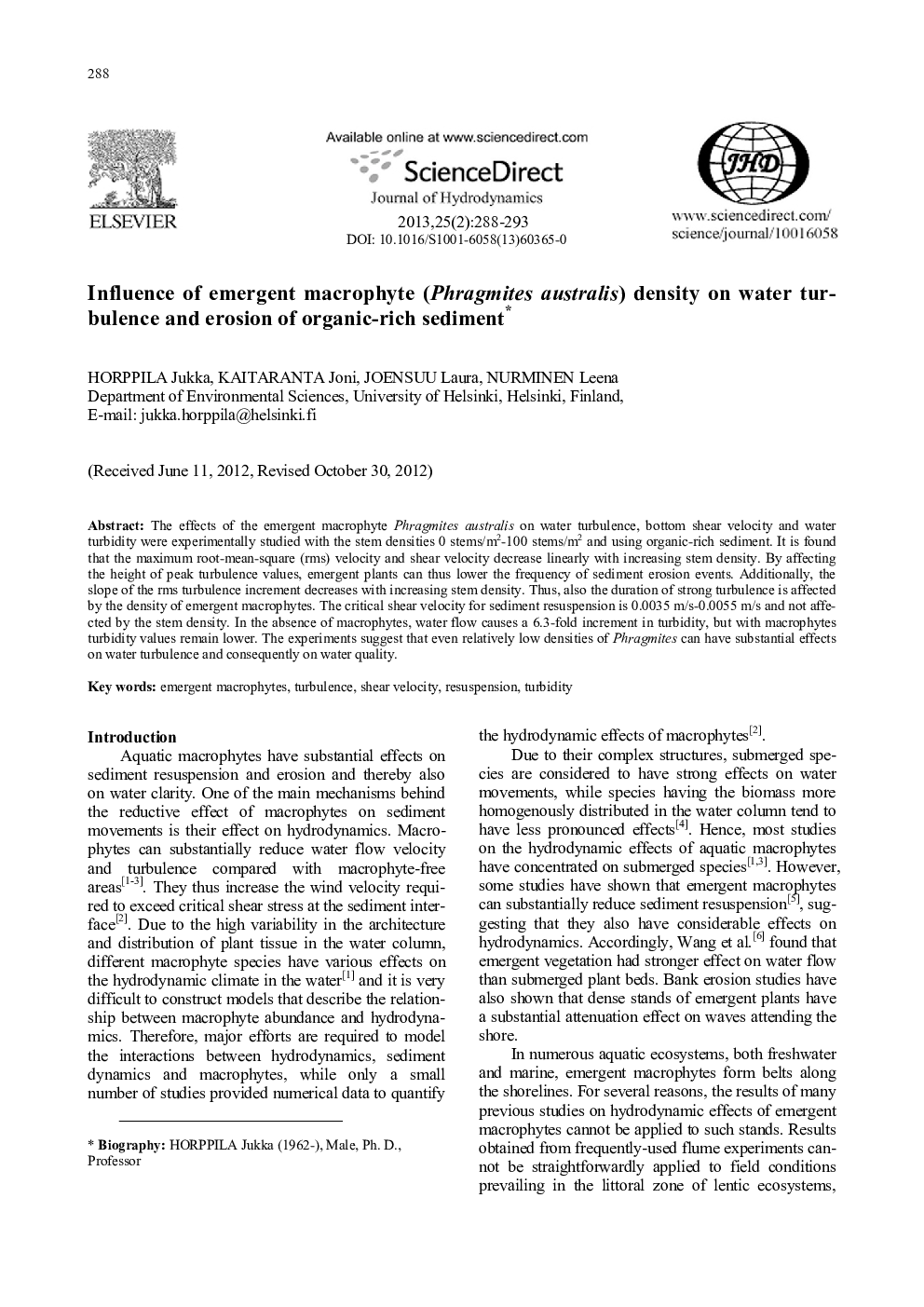| Article ID | Journal | Published Year | Pages | File Type |
|---|---|---|---|---|
| 1722460 | Journal of Hydrodynamics, Ser. B | 2013 | 6 Pages |
Abstract
The effects of the emergent macrophyte Phragmites australis on water turbulence, bottom shear velocity and water turbidity were experimentally studied with the stem densities 0 stems/m2-100 stems/m2 and using organic-rich sediment. It is found that the maximum root-mean-square (rms) velocity and shear velocity decrease linearly with increasing stem density. By affecting the height of peak turbulence values, emergent plants can thus lower the frequency of sediment erosion events. Additionally, the slope of the rms turbulence increment decreases with increasing stem density. Thus, also the duration of strong turbulence is affected by the density of emergent macrophytes. The critical shear velocity for sediment resuspension is 0.0035 m/s-0.0055 m/s and not affected by the stem density. In the absence of macrophytes, water flow causes a 6.3-fold increment in turbidity, but with macrophytes turbidity values remain lower. The experiments suggest that even relatively low densities of Phragmites can have substantial effects on water turbulence and consequently on water quality.
Related Topics
Physical Sciences and Engineering
Engineering
Ocean Engineering
Authors
Jukka HORPPILA, Joni KAITARANTA, Laura JOENSUU, Leena NURMINEN,
